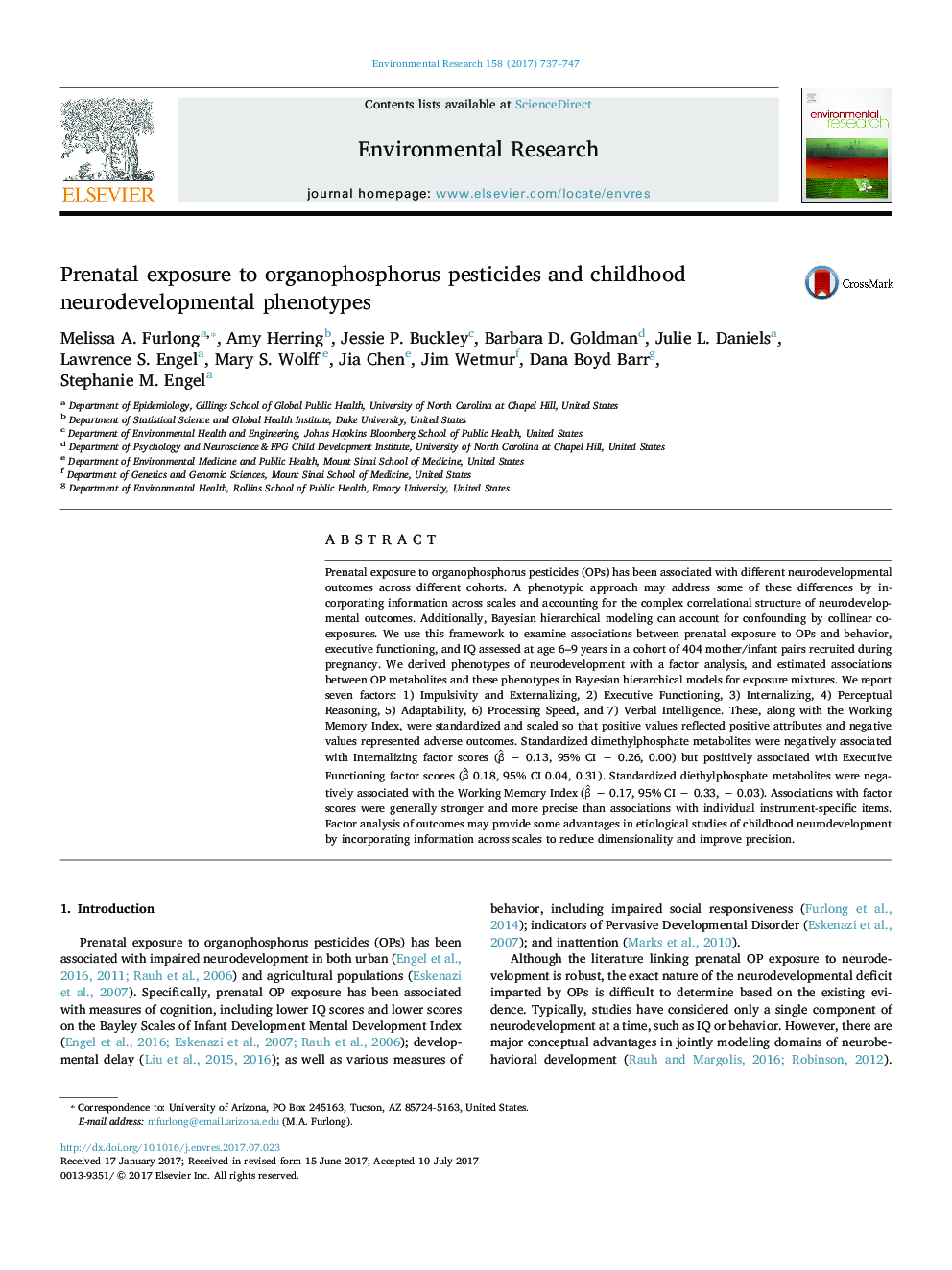| کد مقاله | کد نشریه | سال انتشار | مقاله انگلیسی | نسخه تمام متن |
|---|---|---|---|---|
| 5756343 | 1622545 | 2017 | 11 صفحه PDF | دانلود رایگان |
عنوان انگلیسی مقاله ISI
Prenatal exposure to organophosphorus pesticides and childhood neurodevelopmental phenotypes
ترجمه فارسی عنوان
قرار گرفتن در معرض آفت کش های ارگانوفسفره و فنوتیپ های دوران کودکی دوران کودکی
دانلود مقاله + سفارش ترجمه
دانلود مقاله ISI انگلیسی
رایگان برای ایرانیان
موضوعات مرتبط
علوم زیستی و بیوفناوری
علوم محیط زیست
بهداشت، سم شناسی و جهش زایی
چکیده انگلیسی
Prenatal exposure to organophosphorus pesticides (OPs) has been associated with different neurodevelopmental outcomes across different cohorts. A phenotypic approach may address some of these differences by incorporating information across scales and accounting for the complex correlational structure of neurodevelopmental outcomes. Additionally, Bayesian hierarchical modeling can account for confounding by collinear co-exposures. We use this framework to examine associations between prenatal exposure to OPs and behavior, executive functioning, and IQ assessed at age 6-9 years in a cohort of 404 mother/infant pairs recruited during pregnancy. We derived phenotypes of neurodevelopment with a factor analysis, and estimated associations between OP metabolites and these phenotypes in Bayesian hierarchical models for exposure mixtures. We report seven factors: 1) Impulsivity and Externalizing, 2) Executive Functioning, 3) Internalizing, 4) Perceptual Reasoning, 5) Adaptability, 6) Processing Speed, and 7) Verbal Intelligence. These, along with the Working Memory Index, were standardized and scaled so that positive values reflected positive attributes and negative values represented adverse outcomes. Standardized dimethylphosphate metabolites were negatively associated with Internalizing factor scores (β^ â 0.13, 95% CI â 0.26, 0.00) but positively associated with Executive Functioning factor scores (β^ 0.18, 95% CI 0.04, 0.31). Standardized diethylphosphate metabolites were negatively associated with the Working Memory Index (β^ â 0.17, 95% CI â 0.33, â 0.03). Associations with factor scores were generally stronger and more precise than associations with individual instrument-specific items. Factor analysis of outcomes may provide some advantages in etiological studies of childhood neurodevelopment by incorporating information across scales to reduce dimensionality and improve precision.
ناشر
Database: Elsevier - ScienceDirect (ساینس دایرکت)
Journal: Environmental Research - Volume 158, October 2017, Pages 737-747
Journal: Environmental Research - Volume 158, October 2017, Pages 737-747
نویسندگان
Melissa A. Furlong, Amy Herring, Jessie P. Buckley, Barbara D. Goldman, Julie L. Daniels, Lawrence S. Engel, Mary S. Wolff, Jia Chen, Jim Wetmur, Dana Boyd Barr, Stephanie M. Engel,
